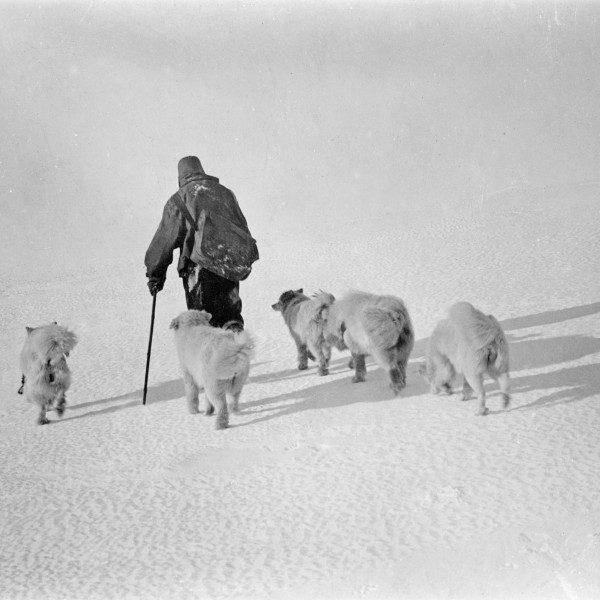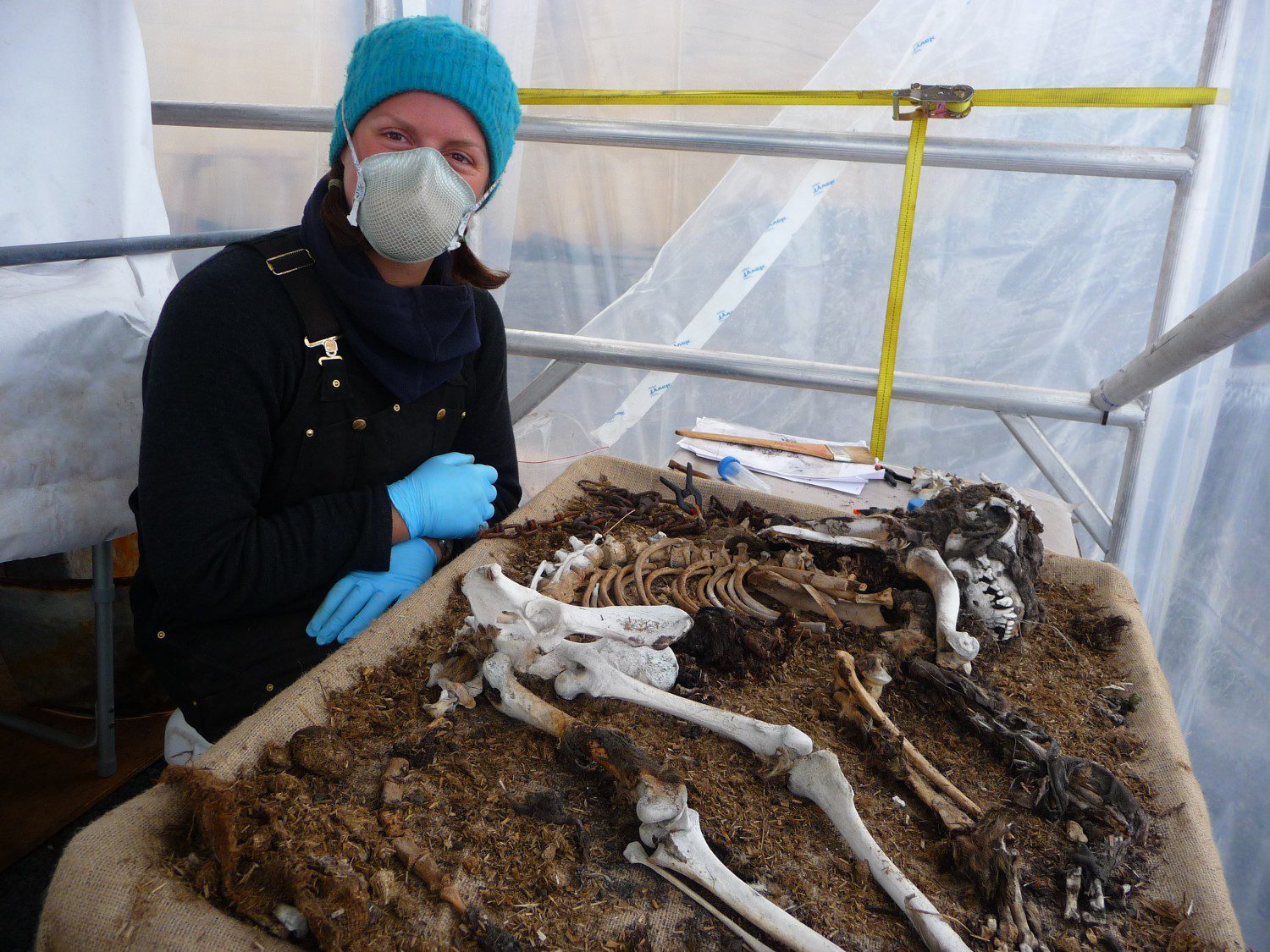Dogs
By Sue Bassett
While Captain RF Scott wasn’t keen on the idea of using dogs as his main means of transport to the South Pole—largely because of the cruelty and sacrifice involved—he did take a team of 35 sledging dogs (and a collie bitch, ‘Lassie’) to Antarctica on his 1910–13 expedition.
 Royal Geographical Society
Royal Geographical Society Antarctic Heritage Trust – dogs
The sledging dogs were collected in Siberia, moved by dog-driver to Vladivostok, and transported by steamer to Lyttelton, New Zealand, via Sydney, to be loaded onto the ‘Terra Nova’ for the 5-week voyage to Antarctica. There they lived in the expedition hut’s stables at Cape Evans under the control of their handler, CH Meares. Each had a name and their antics, personalities, highs and lows are referred to frequently in Scott’s journals.
Later, Ernest Shackleton’s 1914–17 Ross Sea support party also had a small team of dogs at the hut. Ten members of the expedition were marooned at Cape Evans when their ship, ‘SY Aurora’, still containing most of their supplies and equipment, broke anchor and was swept away from shore. Ernest Joyce, who was the leader of the sledging party, and his team relied heavily on their surviving dogs to bring their weakened scurvy ridden bodies home after their journey across the Ross Ice Shelf to lay depots of stores.
 Cantebury Museum
Cantebury Museum Samson, one of the dogs that went to the ice with Shackleton’s Ross Sea Party.
Nearly a century later, the degraded body of an unidentified sledging dog from one of these expeditions still lay chained to the northern wall outside the stables at the Cape Evans hut. There are photographs of the dog from the 1950s, when it was desiccated but still largely articulated within its coat. Since then, the ravages of the elements and disturbance by opportunistic skuas – scavenging seabirds, which live in abundance around Cape Evans – have resulted in decay and loss of the dog’s flesh and skin, and disarticulation and scattering of exposed skeletal material.
During the Trust’s recent work to carry out essential repairs to the stables, the dog’s remains were re-excavated and moved. As a protection against further deterioration, they were relocated inside the stables and laid out in one of the pony stalls. The dogs of both Scott’s and the Ross Sea Party’s expeditions were usually allowed to roam freely around in the stables so it is a fitting final resting place.
 Antarctic Heritage Trust
Antarctic Heritage Trust Lucy conserves the skeleton of a husky from the Ross Sea Party at Cape Evans. The skeleton was re-associated after several years of meltwater and wind erosion had begun to scatter the bones.


